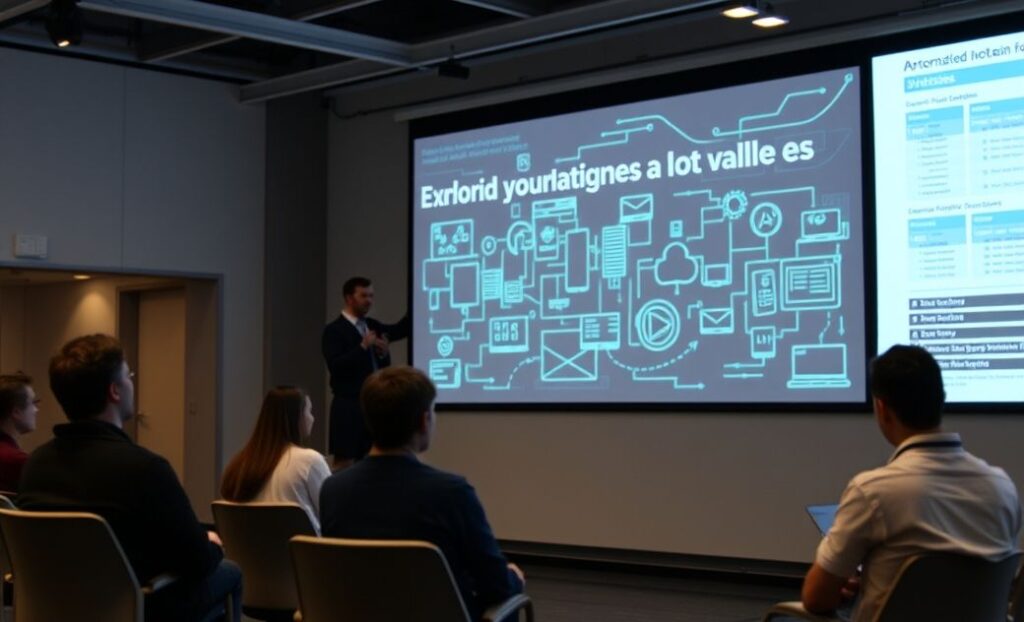In a world where efficiency and productivity are key, software automation has become an essential component of modern business operations. As technology advances, so do the trends in software automation. Understanding these trends is crucial for staying competitive and innovative. This article explores the latest developments in software automation and how they impact businesses across various industries.
Rise of Artificial Intelligence and Machine Learning
One of the most significant trends in software automation is the integration of Artificial Intelligence (AI) and Machine Learning (ML). These technologies enhance automation tools by enabling them to learn and adapt over time. This dynamic learning capability leads to improved accuracy and efficiency in processes such as data analysis, customer service, and even decision-making.
AI-Driven Process Automation
AI-driven automation tools are now capable of performing complex tasks that previously required human intelligence. From customer support chatbots that use natural language processing to deep learning algorithms that optimize supply chains, AI is at the forefront of transforming how tasks are automated.
Enhanced Predictive Analysis
With AI and ML, predictive analytics is more powerful than ever. Businesses can now anticipate future trends, customer preferences, and potential disruptions, allowing for more informed strategic decisions. This form of automation reduces risk and creates a proactive business environment.
Hyperautomation
Termed by Gartner as one of the top technology trends, hyperautomation involves the orchestrated use of multiple technologies to automate vast amounts of processes. It surpasses traditional automation by integrating AI, ML, robotic process automation (RPA), and more to achieve comprehensive, intelligent automation.
Integration of RPA and Cognitive Technologies
Hyperautomation seeks to combine RPA with cognitive technologies such as natural language processing and understanding. This convergence enables systems to process unstructured data, enhancing the scope of tasks that can be automated and ultimately reducing manual intervention.
End-to-End Automation Solutions
This trend focuses on providing automation from one end of a process to the other, ensuring seamless workflow and eliminating bottlenecks. Through hyperautomation, businesses can achieve complete digitization of their operations, resulting in significant time and cost savings.
Low-Code and No-Code Platforms
The emergence of low-code and no-code platforms is democratizing software automation. These platforms empower users with little to no programming background to build and implement automation solutions. It enables businesses to speed up development processes and reduce dependency on specialized IT teams.
Rapid Development and Deployment
Low-code and no-code solutions allow for quicker application development and deployment, which is particularly beneficial for rapidly changing market demands. This agility provides a competitive edge by enabling faster time-to-market for new applications and features.
Increased Accessibility and Innovation
By making automation tools accessible to non-developers, these platforms foster innovation within organizations. Team members from various departments can now contribute to and drive automation initiatives, leading to a comprehensive approach to improving processes.
Focus on Security Automation
As the digital landscape evolves, so do security threats. This has led to a crucial trend towards automating security protocols. Automation in cybersecurity helps in real-time threat detection, proactive protection measures, and rapid response to incidents.
Automated Threat Detection
With advanced algorithms, security automation tools can quickly identify potential threats and anomalies across IT infrastructure. These tools help businesses mitigate risks before they escalate into severe security breaches.
Streamlined Compliance and Reporting
By automating compliance checks and reporting processes, businesses ensure they remain in line with regulatory requirements. It allows for regular auditing and transparent documentation, crucial for organizations in heavily regulated industries.
In conclusion, the trends in software automation are propelling businesses towards a future characterized by efficiency, innovation, and resilience. Embracing these trends not only fosters growth but also positions organizations to navigate the complexities of the digital age effectively.
